If you’re huddling with a dog or cat, you know what we’re talking about here: no matter how often you vacuum, sweep, or lint-roll your clothes, pet hair always seems to reappear. You wonder if your cats have finally managed to open a portal that keeps bringing back their dander just to mess with you and show you who’s boss! Shedding is one of the most common complaints among pet owners, and for good reason — fur finds its way onto couches, carpets, clothing, and even into the air you breathe.
The first thing to understand is that shedding is natural. All cats and dogs with fur shed to some degree, and it’s part of keeping their coat healthy. Seasonal changes, breed type, diet, and even stress can affect how much they shed. While you can’t stop shedding altogether, what you can do is manage it with the right tools — both for grooming your pet and for cleaning your home.
The mistake many owners make is relying on just one approach, like vacuuming. While vacuums are important, they only deal with the mess after it lands on your floors and furniture. The smarter strategy is a combo attack: prevention plus cleanup. That means using grooming tools to remove loose hair before it sheds around the house, combined with cleaning tools designed to tackle the hair that still escapes.
Fortunately, the market is full of products made specifically for pet owners. From de-shedding brushes that pull out the undercoat to pet vacuums with specialized attachments, and from rubber gloves that grab fur to air purifiers that trap dander in the air, there are solutions for every type of pet and household. The key is knowing which ones actually work — and which ones are just gimmicks designed to lure.
In this guide, we’ll break down the tools that truly reduce pet shedding mess. We’ll start with grooming essentials that stop hair at the source, move on to the best cleaning gadgets for your home, and finish with a few preventive aids that make life easier. By the end, you’ll have a clear picture, we hope, of the tools worth investing in and a strategy to keep pet hair from taking over your home. We can’t guarantee if we’re also under your cat’s spell, though.
Grooming Tools That Reduce Shedding
The most effective way to control shedding is to stop loose hair before it hits your furniture and floors. Regular grooming doesn’t just keep your pet looking good — it also reduces the amount of fur floating around your home. Here are the grooming tools that actually make a difference.
1. De-Shedding Brushes
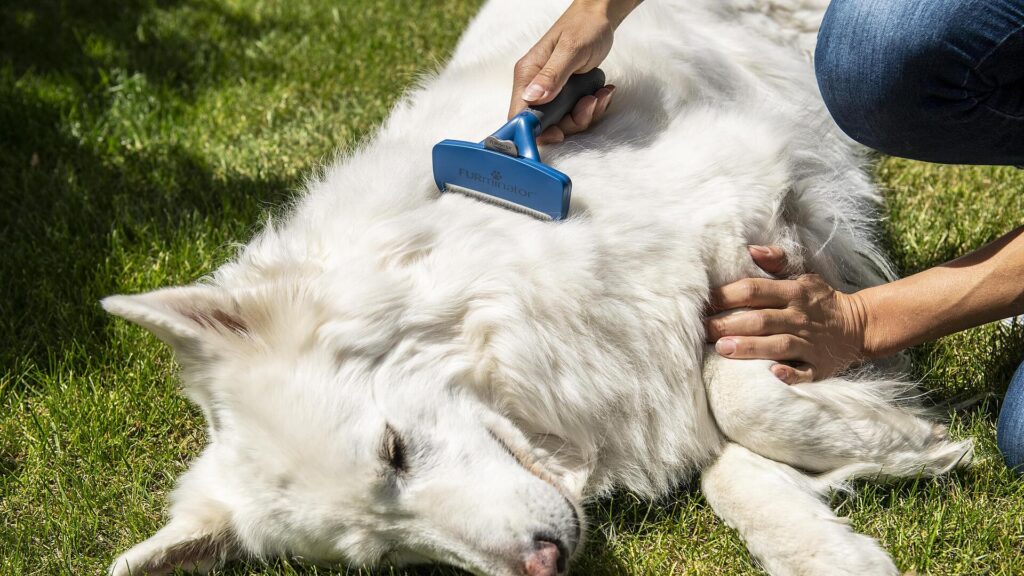
These are kind of the gold standard for reducing shedding. Tools like the FURminator or Hertzko De-Shedding Brush are designed with fine, stainless-steel teeth that reach into the undercoat and pull out loose hair without damaging the topcoat.
- Best For: Heavy-shedding breeds like Labradors, Golden Retrievers, Huskies, and long-haired cats.
- Pros: Removes massive amounts of fur in one session; reduces overall shedding by up to 90% with consistent use.
- Cons: Can be harsh if overused; not ideal for very short-haired pets.
2. Grooming Gloves
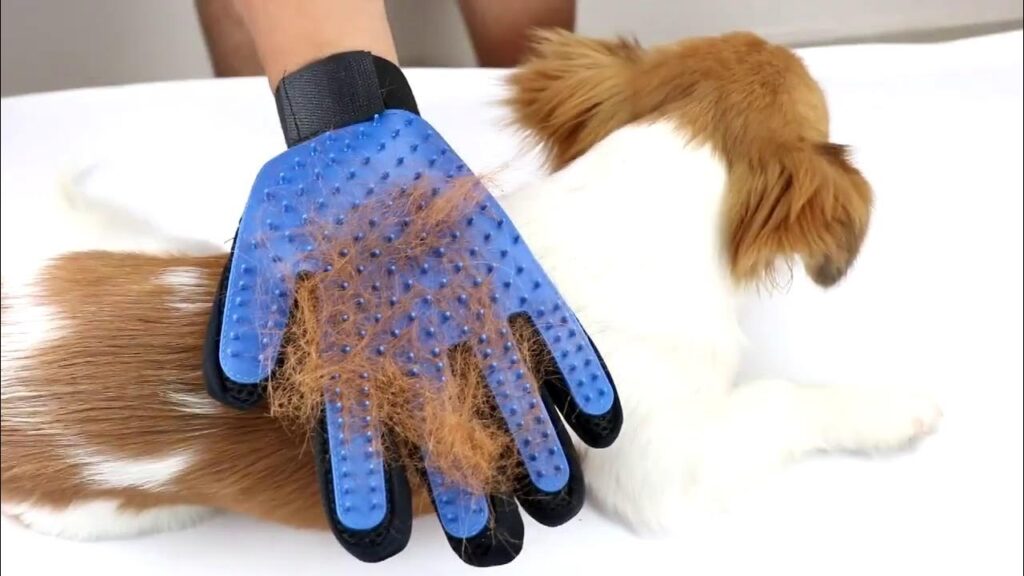
Grooming gloves look like regular petting gloves but are covered in soft rubber or silicone nubs. As you stroke your pet, the nubs grab loose hair and form it into clumps for easy disposal.
- Best For: Cats, small dogs, and pets that dislike traditional brushes.
- Pros: Gentle and stress-free; doubles as bonding time; effective on short coats.
- Cons: Less effective for long-haired breeds with thick undercoats.
3. Undercoat Rakes

Undercoat rakes are heavy-duty grooming tools designed with long, widely spaced teeth that penetrate deep coats. They’re particularly effective during seasonal shedding when pets “blow” their coats.
- Best For: Thick-coated breeds like German Shepherds, Malamutes, and Collies.
- Pros: Removes dense undercoat fur efficiently; prevents mats and tangles.
- Cons: Too harsh for short-haired pets; requires careful use to avoid skin irritation.
4. Shedding Blades
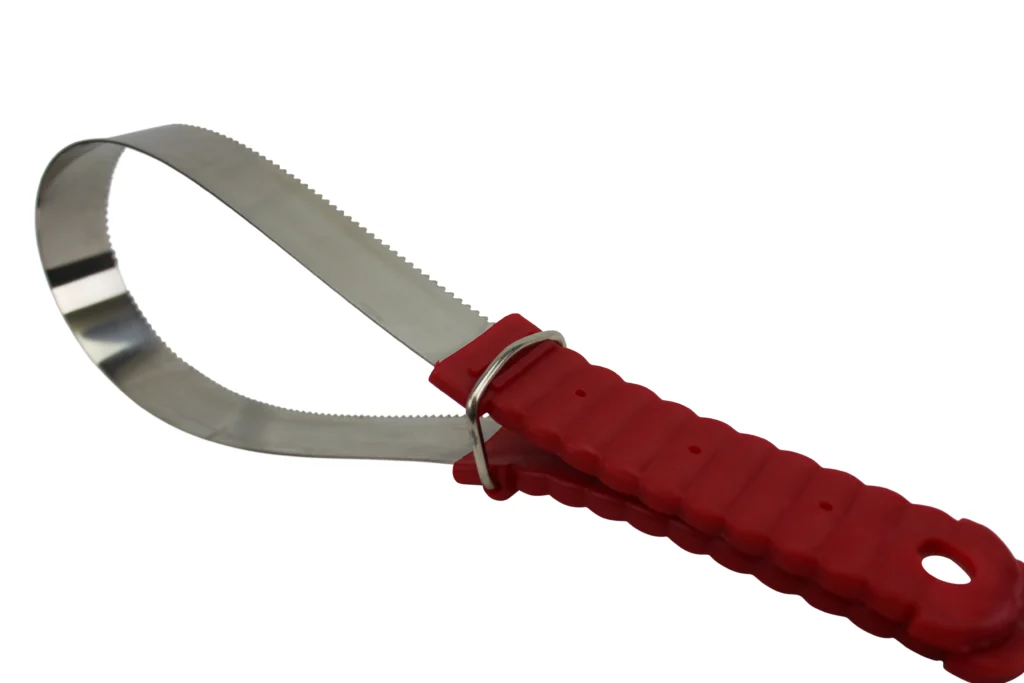
A shedding blade looks like a metal loop with serrated edges. Don’t worry, it doesn’t bite, but your dog just might. Dragging it lightly across your dog’s coat removes loose hair in large quantities.
- Best For: Large dogs with short to medium coats (e.g., Labradors, Boxers).
- Pros: Quick coverage for big dogs; inexpensive.
- Cons: Not suitable for cats or sensitive-skinned pets; can feel rough.
5. Pet Grooming Vacuums
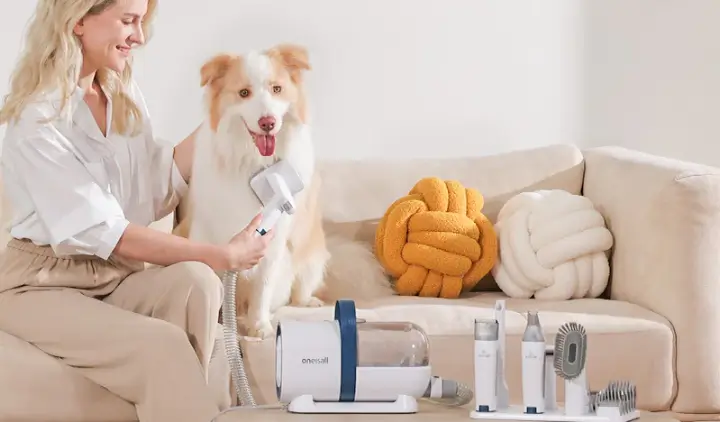
These are hybrid tools that combine brushing with suction. Brands like Dyson and specialized grooming vacuums attach directly to your vacuum hose. As you brush your pet, loose hair is pulled straight into the vacuum instead of drifting into the air.
- Best For: Pets comfortable with noise and handling.
- Pros: Minimal cleanup afterward; reduces airborne hair and dander.
- Cons: Some pets may be frightened by the sound; higher cost than brushes.
6. Regular Grooming Routines Matter

No tool works without consistency. Most pets benefit from:
- Daily brushing for heavy shedders or during peak shedding seasons.
- 2–3 times per week for moderate shedders.
- Once a week for light shedders.
Pair grooming with occasional baths using deshedding shampoos and conditioners to loosen excess hair.
Bottom Line: Grooming tools like de-shedding brushes, rakes, and gloves are your first line of defense. By removing fur directly from your pet, you’ll cut down dramatically on the amount of hair that ends up on couches, carpets, and clothing.
Home Cleaning Tools for Shedding Control
Even with regular grooming, some hair will always escape. There’s no stopping some slippery ones. That’s why pairing pet grooming with the right home cleaning tools is essential. Standard vacuums and brooms often struggle with pet hair, which clings to fabrics and embeds itself in carpets. These tools are designed specifically to handle the mess.
1. Cordless Vacuums with Pet Attachments
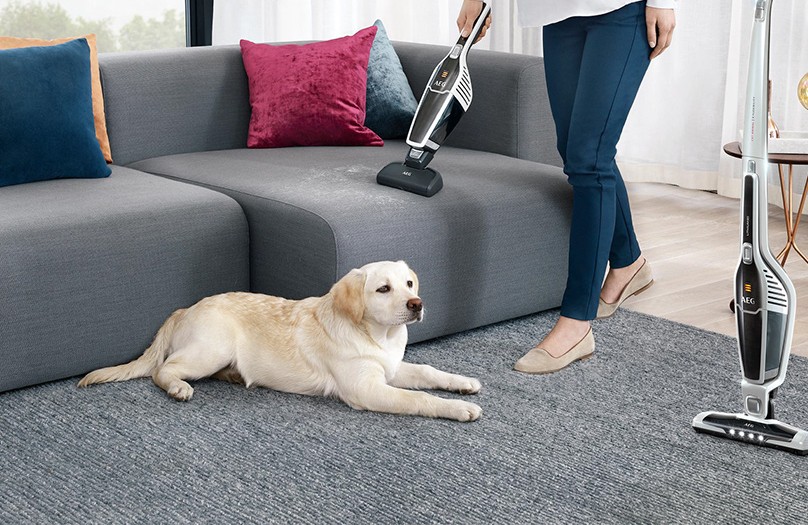
Brands like Dyson, Shark, and Bissell make cordless vacuums built for pet owners. The key is the motorized pet hair attachment — a small, powered brush head that agitates fibers and lifts embedded hair from couches, stairs, and rugs.
- Best For: Multi-pet households; daily quick cleaning.
- Pros: Lightweight, portable, great for stairs and upholstery.
- Cons: Expensive; limited battery life.
2. Upright Vacuums with HEPA Filtration
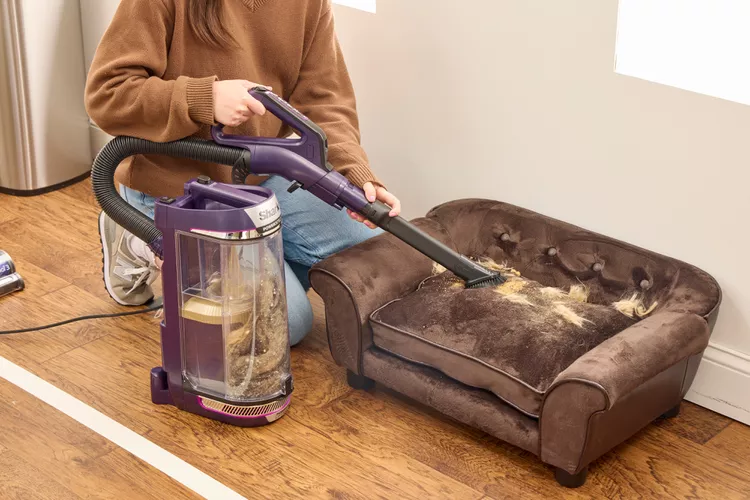
For larger homes, upright vacuums with HEPA filters and pet-specific brush rolls are essential. HEPA filtration captures pet dander, helping allergy sufferers breathe easier.
- Best For: Homes with carpets and multiple pets.
- Pros: Strong suction; captures allergens; large capacity.
- Cons: Bulky; less convenient for small jobs.
3. Lint Rollers & Reusable Sticky Brushes
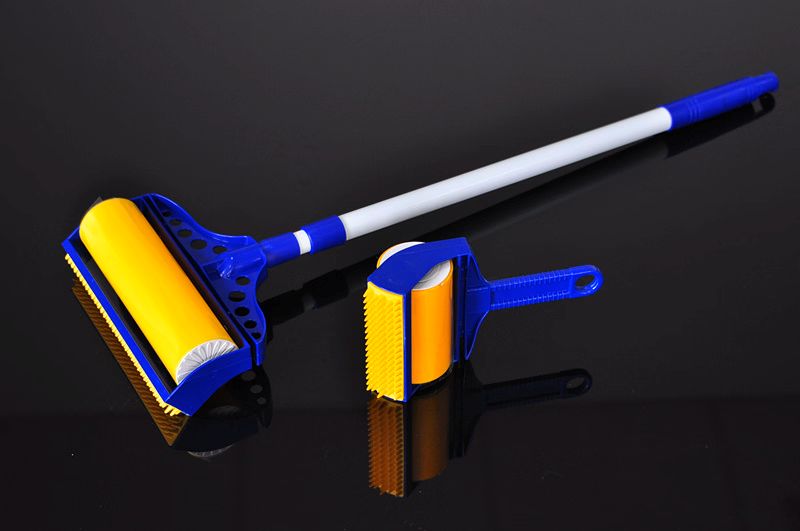
The simplest solution for couches, clothes, and car seats. Lint rollers use sticky sheets, while reusable silicone brushes offer an eco-friendly option.
- Best For: Quick touch-ups before heading out.
- Pros: Cheap, fast, portable.
- Cons: Not effective for heavy shedding or large areas.
4. Rubber Brooms & Squeegees
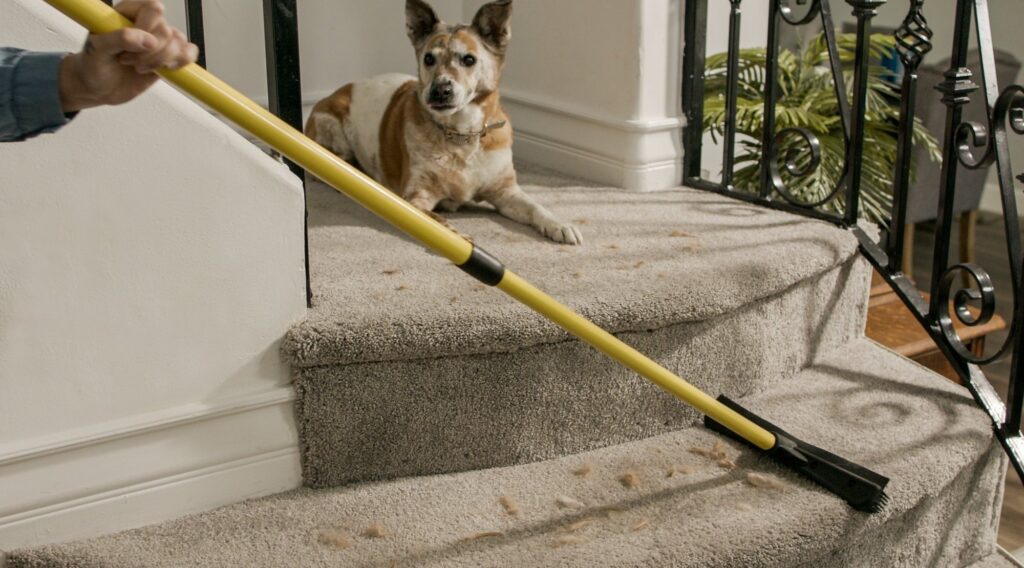
Rubber naturally generates static, which attracts and lifts hair from carpets and rugs. Squeegee-style tools also work well on upholstery and car interiors.
- Best For: Rugs, carpets, and large fabric surfaces.
- Pros: Surprisingly effective; inexpensive; easy to clean.
- Cons: Takes more effort than vacuuming.
5. Upholstery Tools & Attachments
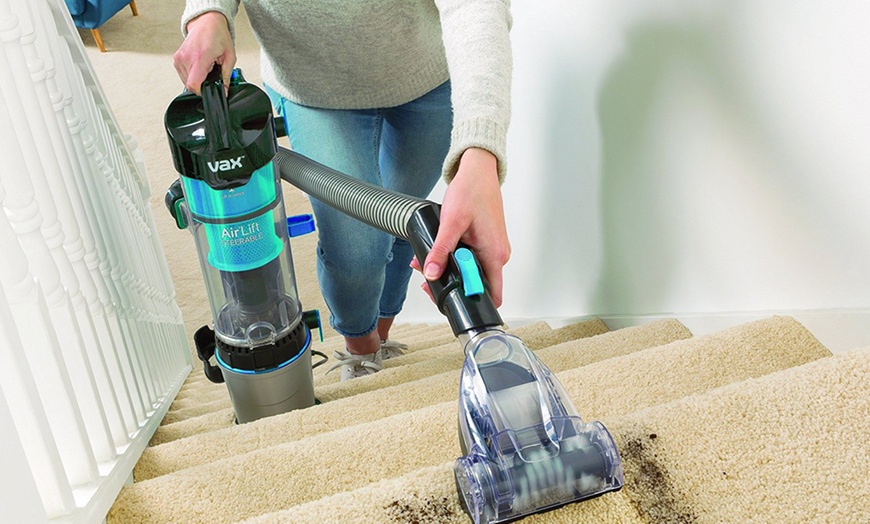
Specialized upholstery brushes (often included with vacuums) are designed to clean couches and chairs where hair sticks most. Some include anti-tangle technology to prevent long hair from wrapping around rollers.
- Best For: Sofas, armchairs, and pet beds.
- Pros: Targeted cleaning; prevents fabric damage.
- Cons: Usually requires a compatible vacuum.
6. Air Purifiers with HEPA Filters
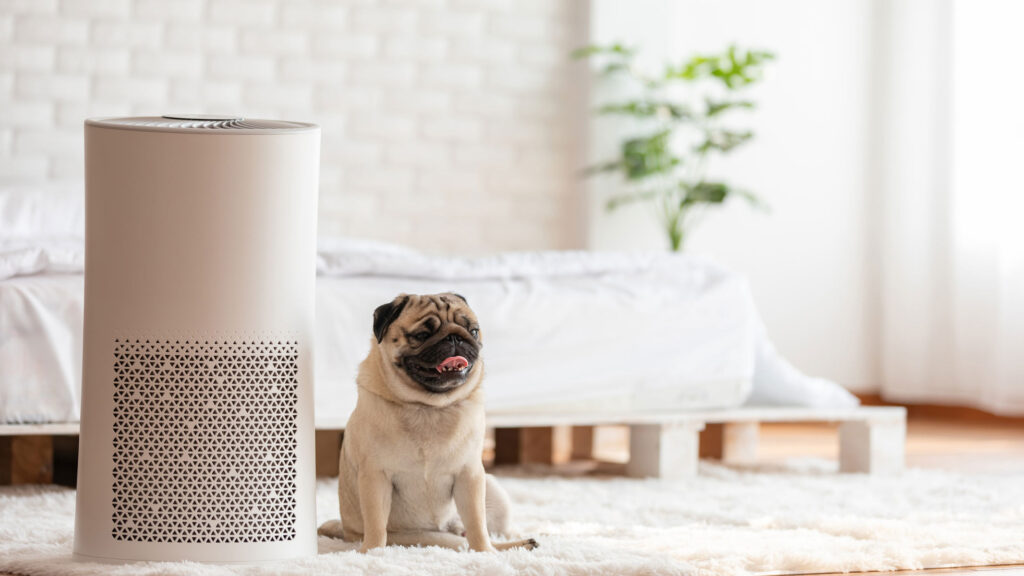
While air purifiers won’t collect fur off the couch, they reduce airborne pet hair and dander that eventually settles on surfaces. HEPA filters trap fine particles, helping with allergies and making overall cleaning easier.
- Best For: Homes with allergy sufferers.
- Pros: Improves air quality; reduces dust and dander buildup.
- Cons: Doesn’t directly remove fur from surfaces.
7. Washable Furniture Covers & Throws

Covers aren’t cleaning tools per se, but they’re one of the easiest ways to reduce mess. Washable throws or slipcovers protect your sofa from fur and can be swapped out weekly.
- Best For: Couches and high-traffic furniture.
- Pros: Low maintenance; extends sofa lifespan.
- Cons: Need frequent washing; style may not suit all décor.
Bottom Line: The best cleaning toolkit usually includes a powerful vacuum with pet attachments, a reusable lint brush, and a rubber broom or squeegee for rugs and tricky spots. Pairing these with washable covers and an air purifier will dramatically reduce how much pet hair takes over your home.
Preventive Aids to Control Shedding
While grooming tools and cleaning gadgets handle most of the battle, there are a few preventive steps that can make shedding more manageable. These won’t eliminate fur entirely, but they can reduce the amount your pet loses and keep your home cleaner for longer.
1. Diet & Supplements
A healthy coat outside starts from the inside. Pets that eat a balanced diet rich in Omega-3 and Omega-6 fatty acids often shed less because their skin is healthier, and their fur is stronger. Some owners add fish oil supplements (with vet approval) to reduce dryness and shedding. If your pet’s shedding seems excessive, it may also be a sign of nutritional imbalance — always check with your vet.
2. Regular Grooming Routines
Consistency matters more than the tool itself. Even the best de-shedding brush won’t help if you only use it once a month. Establish a routine based on your pet’s coat:
- Heavy shedders: Daily brushing during shedding season.
- Moderate shedders: 2–3 times a week.
- Light shedders: Once a week.
Bathing with deshedding shampoos once a month can also help loosen dead fur, but avoid over-bathing, as it can dry out skin and cause more shedding.
3. Furniture Covers & Washable Throws
A simple but highly effective preventive measure is covering your pet’s favorite lounging spots. Washable slipcovers, blankets, or throws catch fur before it embeds into fabric. Rotate and wash them weekly to keep couches and chairs fur-free with minimal effort.
4. Climate & Environment
Seasonal shedding can be worse in very dry homes. Using a humidifier during winter reduces static and prevents fur from clinging to fabrics. Regular house cleaning and vacuuming also ensure hair doesn’t build up into tumbleweeds across your floor.
Bottom Line: Preventive aids won’t stop shedding, but they reduce the volume and mess. A balanced diet, consistent grooming, and protective covers mean less fur flying around and fewer hours spent cleaning every week.
FAQs: Reducing Pet Shedding Mess
- Do de-shedding brushes really work?
Yes. Tools like the FURminator can reduce shedding by up to 90% when used regularly. They reach into the undercoat — where most loose hair comes from — and remove it before it falls around your home. - How often should I groom my pet to control shedding?
It depends on breed and coat type:
- Heavy shedders (Huskies, Labradors): Daily during shedding season.
- Moderate shedders: 2–3 times per week.
- Light shedders (short-haired cats/dogs): Once a week.
Consistency is more important than marathon sessions.
- Is shaving my pet a good way to stop shedding?
Generally, no. Shaving doesn’t stop shedding — it just makes the hairs shorter. Worse, shaving can damage a pet’s coat and leave their skin vulnerable to sunburn and irritation. Instead, stick with proper grooming and deshedding tools. - Do air purifiers really help with pet hair?
Air purifiers won’t catch big clumps of fur, but they are excellent at trapping dander and fine airborne hair. This helps reduce allergy symptoms and keeps surfaces cleaner. Pair an air purifier with vacuums and brushes for the best results. - What’s the best tool for cats versus dogs?
- Cats: Grooming gloves or smaller de-shedding brushes are usually best, since many cats dislike harsh tools.
- Dogs: Larger de-shedding brushes, rakes, or even shedding blades for big breeds with heavy coats.
- Can diet really reduce shedding?
Yes. Pets fed a diet rich in fatty acids and high-quality protein usually have healthier skin and stronger coats. This means less breakage and less loose hair. Always consult your vet before adding supplements. - What’s the fastest way to clean fur from furniture?
A combination of a vacuum upholstery tool and damp rubber gloves works best. The vacuum lifts most of the hair, while the gloves grab what’s left behind in the fabric weave.
Pro Tip: Build a “shedding toolkit” — one grooming tool (brush or gloves), one cleaning tool (vacuum or lint brush), and one preventive aid (diet, cover, or humidifier). Together, these cut shedding mess dramatically.
Conclusion & Top Tools Summary
Shedding is a reality of life with pets, but it doesn’t have to take over your home and enwrap you in a not-needed fur coat. The key isn’t to fight against it, but to manage it smartly with the right combination of grooming tools, cleaning gadgets, and preventive habits.
Let’s make this nice and easy, eh? From the grooming side, de-shedding brushes like the FURminator remain the most effective tool for reducing loose undercoat hair before it spreads. For pets that dislike brushes, grooming gloves offer a gentler option that doubles as bonding time. And for heavy shedders, undercoat rakes and even pet grooming vacuums take the battle to the next level.
In the home, a good cordless vacuum with a pet hair attachment is worth its weight in gold, making daily cleanup faster and more thorough. Pair this with reusable tools like lint brushes, rubber brooms, or upholstery attachments, and you’ll find fur easier to handle. For households with allergy sufferers, HEPA air purifiers also reduce airborne hair and dander.
Prevention rounds out the strategy. A healthy diet with omega-rich supplements, consistent grooming routines, and simple protective measures like washable covers or throws keep mess under control before it becomes overwhelming.
Top Recommendations at a Glance:
- Best Grooming Tool: De-shedding brush (FURminator or Hertzko).
- Best Gentle Tool: Grooming gloves for cats and sensitive pets.
- Best Heavy-Duty Cleaning Tool: Cordless vacuum with pet attachments (Dyson, Shark, Bissell).
- Best Budget Tool: Rubber broom or reusable lint brush.
- Best Preventive Aid: Omega-3 supplements and washable furniture covers.
Final Word: Shedding is natural, but with the right toolkit, you can turn a constant headache into a manageable routine — keeping your home cleaner, fresher, and a lot more comfortable for both you and your companion.



